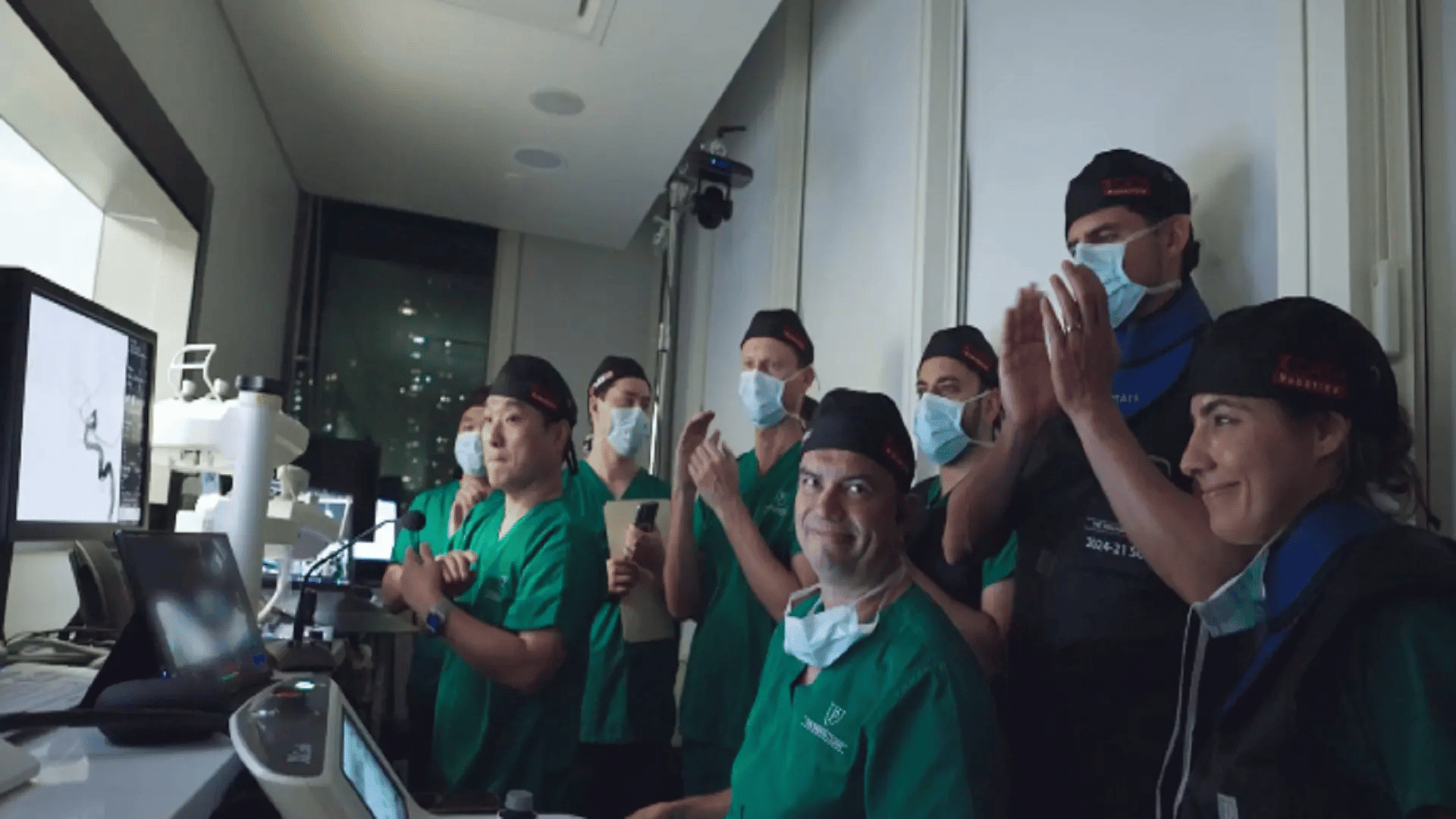It seems as if robotic surgery breakthroughs are happening every day. The most recent comes from surgeons in Panama and the medical device company XCath. Surgeons successfully performed the first-in-human use of XCath’s EVR robotic system to treat three patients with brain aneurysms.
The landmark procedures happened at The Panama Clinic in Panama City.
This is only the second time in history that a surgical robot was used for an intracranial vasculature intervention. It’s noteworthy to mention that XCath’s EVR is now the only endovascular robotic system to successfully navigate the intracranial vasculature or perform a neurointerventional treatment.
Additionally, it holds the distinction of being the world’s first triaxial neurovascular robot to perform such a treatment. Physicians say they demonstrated exceptional control and navigated the EVR system through each patient’s intricate brain vessels. Each treatment used commercially available flow-diverting stents and intrasaccular devices. Additionally, surgeons performed two robotic procedures consecutively in the same operating room within four hours.
An Urgent Need For Such Robotic Surgery Devices

Physicians and surgeons emphasize the urgent need for this technical advancement. About 6.7 million Americans are affected by aneurysms. Worldwide, ruptures cause approximately 500,000 deaths annually. Survivors often endure permanent neurological damage.
“Neurovascular intervention for brain aneurysm requires operating with sub-millimetric precision, demanding exceptional control and consistency,” said Dr. Vitor Mendes Pereira, who led the procedure. “With the success of these aneurysm procedures, XCath’s system has demonstrated the potential to enhance human performance and bring a new level of precision to complex neurovascular cases.”
Dr. Pereira added that the robotic assistance could benefit less experienced physicians and help them become “consistent, low-risk interventionists.”
“These procedures mark a pivotal milestone in the evolution of neurointerventional care and establish Panama as a leading strategic hub for the development of new medical technologies,” said Panamanian neurosurgeon Dr. Ameijeiras Eduardo Fonseca, CEO of XCath.
XCath’s EVR system is equipped with telerobotic capabilities. This feature was demonstrated in previous simulations where Dr. Pereira performed a remote mechanical thrombectomy from Abu Dhabi on a simulated patient in South Korea. Researchers hope that successful clinical trials will help pave the way for commercial availability.


